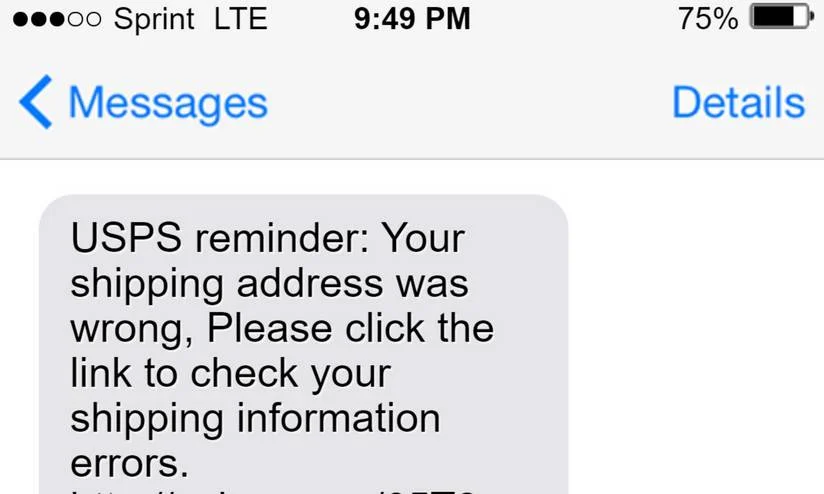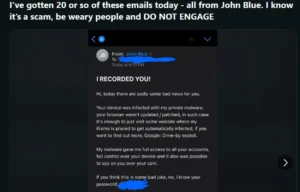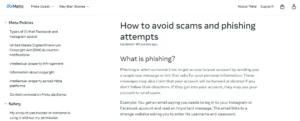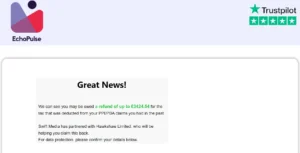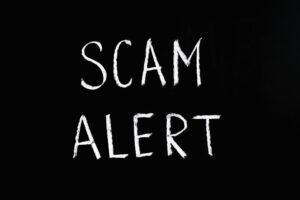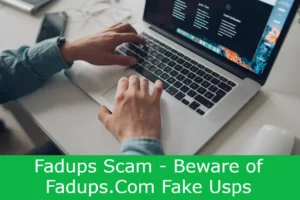Are you aware of the USPS Invalid Address Scam and how it can impact you? This article aims to provide you with everything you need to know about this scam, so you can protect yourself from falling victim to it.
The USPS Invalid Address Scam involves fake messages that appear to be from the United States Postal Service (USPS), informing recipients that their address is invalid and they must click on a link or download an attachment to verify their information.
These fake messages are designed to trick unsuspecting individuals into providing personal information or downloading malware onto their devices. By posing as the USPS, scammers play on people’s trust in a well-known organization, making it easier for them to deceive and manipulate their victims.
It is important to understand how this scam works, how to identify it, and what steps to take if you have already fallen victim. By being informed and vigilant, you can stay safe online and avoid becoming a target of the USPS Invalid Address Scam.
Table of Contents
What is USPS Invalid Address Scam?
Are you aware of the USPS Invalid Address scam? This type of phishing scam is designed to deceive unsuspecting customers into revealing their personal and financial information. Scammers send fake emails or text messages that mimic official USPS communications, but in reality, they are from malicious actors aiming to steal your identity or money. The fraudulent messages often claim there is an issue with your package delivery, such as an invalid address or a failed delivery attempt.
To protect yourself from falling victim to this scam, it’s important to be aware of common scams like the USPS Invalid Address scam. Stay vigilant and remember that USPS will never ask for sensitive information via email or text message.
Additionally, USPS has implemented various security measures and online fraud protection protocols to safeguard customer information. If you receive a suspicious message, report it to the proper authorities immediately so they can take appropriate action against these scammers.
Remember, protecting yourself from scams requires staying informed about the latest tactics used by fraudsters. By knowing how to identify and report scams like the USPS Invalid Address scam, you can help protect yourself and others from falling victim to these deceptive schemes.
USPS Invalid Address Scam Fake Messages
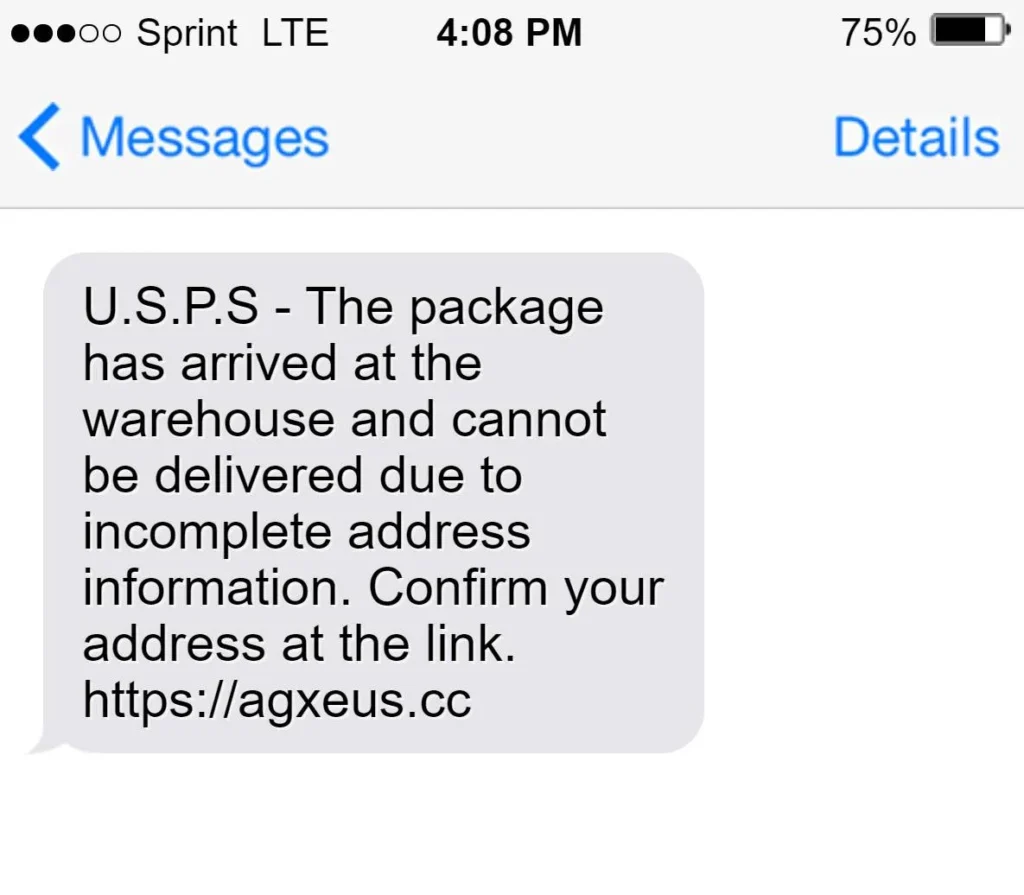
Beware of these sneaky messages pretending to be from USPS, claiming there’s an issue with your package delivery. These fake messages are designed to trick you into taking action and providing your personal information or clicking on malicious links. Here are some common phishing techniques used in these scams:
- Urgency: The scammers create a sense of urgency by claiming that there is an immediate problem with your package delivery, such as an invalid address or missing label.
- Impersonation: They impersonate USPS by using official logos, email addresses, and even phone numbers to make the message appear legitimate.
- Suspicious links: The messages often include links that lead to fake websites designed to steal your personal information or infect your device with malware.
- Request for personal information: Scammers may ask you to provide sensitive information like your address, social security number, or credit card details under the guise of resolving the package delivery issue.
- Pressure tactics: Some messages may threaten additional fees or penalties if you fail to take immediate action.
Recognizing fake emails is crucial in protecting yourself from these scams. Look out for red flags such as spelling and grammar errors, generic greetings instead of personalized ones, and suspicious email addresses or domains. It’s important never to click on any links or download attachments from these emails unless you can verify their authenticity.
To protect your personal information, remember not to share sensitive data like passwords or financial details through email. Be cautious when providing personal information online and only do so on secure websites with a trusted reputation. If you receive a suspicious message claiming to be from USPS, report it immediately by forwarding it to the USPS Cybercrime Team at spam@uspis.gov.
In today’s digital age, cybersecurity awareness is more critical than ever before. Stay vigilant against online scams by regularly updating your devices’ software and antivirus programs. Educate yourself about common phishing techniques and learn how to spot scam attempts. By staying informed and practicing good cybersecurity habits, you can help protect yourself and others from falling victim to these scams.
How does the USPS Invalid Address Scam Work?
Stay alert and protect yourself from falling victim to this sneaky scheme by understanding how scammers exploit your trust in package deliveries. The USPS Invalid Address scam preys on the urgency you feel when expecting a package, using various techniques to make their messages appear legitimate.
They may use official-looking logos, fonts, colors, and signatures to create a sense of authenticity. Additionally, they may spoof email addresses or phone numbers that appear to be from USPS, making it even harder for you to spot the scam. These scammers also employ social engineering tactics to persuade you into taking action.
They create a sense of urgency or fear by stating that your package will be returned or destroyed if you don’t act quickly. They might also offer incentives like discounts or free shipping if you update your information, appealing to your curiosity or emotions by claiming your package contains something important.
To protect yourself from the USPS Invalid Address scam, there are several steps you can take. First and foremost, be cautious when receiving any emails or texts claiming to be from USPS regarding an invalid address issue.
Look out for common signs of phishing scams targeting USPS customers such as misspellings, grammatical errors, or generic greetings instead of personalized ones. Avoid clicking on any links in these messages as they could lead you to fake websites designed to steal your personal information. Instead, visit the official USPS website directly by typing the URL into your browser’s address bar.
If you come across a suspicious message related to the USPS Invalid Address scam, it is crucial to report it promptly. Forward any phishing emails or text messages purporting to be from USPS to the Federal Trade Commission (FTC) at spam@uce.gov and reportphishing@apwg.org so that appropriate actions can be taken against these scammers.
Educating others about this scam is equally important in preventing more people from falling victim. Share information about how scammers use fake tracking numbers in this scheme and encourage others to be vigilant when receiving messages related to package deliveries. By staying informed and spreading awareness, we can collectively combat the USPS Invalid Address scam and protect ourselves and our communities from falling victim to this deceptive scheme.
What to do if you have fallen victim to the USPS Invalid Address scam?
If you’ve fallen victim to the USPS Invalid Address scam, it’s crucial to take immediate action to safeguard your personal and financial information. Start by contacting your bank or credit card company right away and report the incident.
Request them to freeze your accounts, cancel any compromised cards, and issue new ones for added security. It’s also important to change your passwords and security questions for all online accounts that you accessed from the device used to click on the fraudulent link or call the fake number. By doing so, you can prevent unauthorized access to your sensitive information.
Additionally, scan your device using reputable antivirus software to check for any malware or viruses that may have been installed during the scam. This will help ensure that your device is clean and secure moving forward. Reporting the scam is another critical step in recovering from this unfortunate situation.
Forward the fake email you received to spam@uspis.gov or call 1-800-ASK-USPS (1-800-275-8777) to report it directly to USPS. You should also report the scam to the Federal Trade Commission (FTC) through their website at https://reportfraud.ftc.gov/ or by calling 1-877-FTC-HELP (1-877-382-4357). These agencies can investigate further and potentially take action against those responsible for the scam.
To prevent future scams, it’s important not only to educate yourself but also others about such fraudulent activities. Stay informed about common scams and share this knowledge with friends and family members so they can protect themselves as well.
If necessary, consider seeking legal assistance if you believe there has been significant financial loss due to this scam. Remember, taking swift action is key when dealing with identity theft or fraud cases like this one, so don’t hesitate in protecting yourself and recovering any lost funds as soon as possible.
How to Check If Your Device Is Infected With Malware?
One way to ensure the security of your personal and financial information is by checking if your device is infected with malware. Malware, short for malicious software, can cause serious damage to your device and compromise your sensitive data. Here are some best practices for malware protection:
- Install reputable antivirus software: Choose a reliable antivirus program and keep it up to date. This software will help detect and remove any malware threats on your device.
- Regularly update your operating system: Software updates often include important security patches that can protect against known vulnerabilities exploited by malware.
- Be cautious while browsing the internet: Avoid clicking on suspicious links or downloading files from untrusted sources as they may contain malware.
- Enable a firewall: A firewall acts as a barrier between your device and the internet, filtering out potential threats.
Signs of a malware infection include slow performance, frequent crashes, unexpected pop-ups or advertisements, unauthorized changes in settings, or unusual network activity. If you suspect that your device has been infected with malware, it’s crucial to take immediate action to remove it.
To remove malware from your device effectively, follow these steps:
Run a full scan with your antivirus software: Start by initiating a comprehensive scan of your entire system. The antivirus program will identify and quarantine any malicious files it detects.
Disconnect from the internet: Unplug Ethernet cables or disable Wi-Fi to prevent further spread of the malware and minimize its impact.
Use specialized anti-malware tools: Consider using additional tools specifically designed to target certain types of malware that may not be detected by traditional antivirus programs.
Restore from backup (if available): If you have regular backups of your data stored separately from the infected device, restore them after ensuring they are free from any potential infection.
Preventing future attacks is essential in maintaining the security of your device. Some essential tips for preventing malware attacks include practicing safe online behavior such as avoiding suspicious websites and downloads, being cautious when opening email attachments or clicking on links, keeping your software up to date, and regularly backing up your data to a secure location.
By following these best practices and staying vigilant, you can significantly reduce the risk of malware infecting your device.
How to Identify Scams Like USPS Invalid Address scam?
If you were concerned about the possibility of your device being infected with malware, it’s essential to also be aware of another growing threat – scams like the USPS Invalid Address scam. These scams can target unsuspecting individuals online and result in financial loss or identity theft. It is vital to stay informed and vigilant in order to protect yourself from falling victim to such fraudulent schemes.
Identifying scams like the USPS Invalid Address scam requires a keen eye for suspicious activities. One common red flag is receiving an email or message claiming that there is an issue with your address, package delivery, or any other request for personal information.
Scammers often use official-sounding language and logos to create a sense of legitimacy, but it’s important not to be fooled by appearances alone. To ensure scam prevention and scam awareness, always verify the source of such messages independently instead of clicking on links provided in the communication itself.
Another way to identify these common scams is by staying up-to-date on current online fraud tactics. Scammers are constantly adapting their techniques, so being aware of new trends can help you stay one step ahead. Educate yourself about different types of scams through reliable sources and familiarize yourself with warning signs such as requests for immediate payment or threats of legal action if you don’t comply.
By actively engaging in scam prevention measures and increasing your overall scam awareness, you can better protect yourself from falling into these deceptive traps. Remember, when it comes to identifying scams like the USPS Invalid Address scam, knowledge is power!
10 Tips on How to Stay Safe Online?
Staying safe online is all about being proactive and staying informed about the latest scams and fraud tactics. To protect yourself, it’s important to follow best practices for password protection. This includes using strong, unique passwords for each of your accounts and regularly updating them. Avoid using easily guessable information like your name or birthdate, and consider using a password manager to securely store your passwords.
Another key aspect of online safety is safeguarding your social media privacy. Be mindful of the information you share on social media platforms and adjust your privacy settings accordingly. Limit who can see your posts and personal information, and be cautious when accepting friend requests or engaging with unfamiliar accounts.
Phishing emails are a common tactic used by scammers to trick people into revealing sensitive information. To spot and avoid them, always double-check the sender’s email address before clicking on any links or providing any personal details. Look out for spelling mistakes or suspicious URLs in the email content, as legitimate companies usually have professional communication standards.
Enhancing online security can be achieved by enabling two-factor authentication whenever possible. This adds an extra layer of protection by requiring a second form of verification, such as a code sent to your phone, in addition to your password. Two-factor authentication makes it much more difficult for hackers to gain unauthorized access to your accounts.
When it comes to safe online shopping, there are several tips you can follow for secure transactions. Stick to reputable websites that use secure payment methods, indicated by a padlock icon in the browser’s address bar or “https”in the URL. Avoid making purchases over public Wi-Fi networks as they may not be secure. Additionally, regularly check your bank statements for any unauthorized charges and report them immediately if detected.
By implementing these measures – practicing good password protection habits, safeguarding social media privacy, recognizing phishing emails, utilizing two-factor authentication, and following safe online shopping practices – you can significantly reduce the risk of falling victim to online scams and fraud. Stay informed, stay vigilant, and protect your personal information in the digital world.
Frequently Asked Questions
How can I report a USPS Invalid Address scam?
To report a USPS invalid address scam, you can contact your local Postal Inspection Service or file a complaint online. By reporting it, you help protect yourself and others from falling victim to common tactics used by scammers. It’s important to educate others about this scam’s impact on victims.
Are there any warning signs or red flags to look out for with the USPS Invalid Address scam?
Watch out for warning signs and red flags when dealing with the USPS invalid address scam. Be cautious of unsolicited emails or calls, requests for personal information, and pressure to act quickly. Learn from victim experiences and take preventative measures to protect yourself.
Can the USPS Invalid Address scam affect my personal information or financial accounts?
Yes, the USPS invalid address scam can have serious consequences for your personal information and financial accounts. It puts you at risk for identity theft, impacts your credit score, and can result in potential financial loss. Safeguarding personal information and monitoring financial accounts are crucial steps to protect yourself.
Are there any legal actions being taken against the perpetrators of the USPS Invalid Address scam?
Legal repercussions are being pursued against the perpetrators of the USPS invalid address scam. Prosecution efforts are underway, aimed at bringing them to justice. Victims may be eligible for compensation, and public awareness campaigns and collaboration with law enforcement are in place.
What steps can I take to prevent myself from becoming a target of the USPS Invalid Address scam?
To prevent yourself from becoming a target of the USPS invalid address scam, take preventive measures such as safeguarding your personal information, practicing online safety, and being aware of common scams. Follow USPS guidelines and consider identity protection services for added security.
Conclusion
In conclusion, it is important to stay vigilant and informed when it comes to scams like the USPS Invalid Address scam. This type of scam preys on unsuspecting individuals by sending fake messages that appear to be from the United States Postal Service. By understanding how this scam works and what signs to look out for, you can better protect yourself from falling victim to it.
If you have fallen victim to the USPS Invalid Address scam, it is crucial to take immediate action. Contact your local authorities and report the incident, as well as notify your bank or credit card company if any financial information has been compromised. It is also recommended to run a malware scan on your device to ensure that no unwanted software has been installed.
To prevent future scams and stay safe online, there are several tips you can follow. These include being cautious of suspicious emails or messages, avoiding clicking on unfamiliar links or downloading unknown attachments, regularly updating your devices and antivirus software, using strong and unique passwords for all accounts, and educating yourself about common online scams.
By staying informed about the latest scams and taking proactive measures to protect yourself online, you can minimize the risk of falling victim to fraudulent activities like the USPS Invalid Address scam. Remember to always stay skeptical and verify any unusual communications before taking any action that could potentially compromise your personal information or finances.
Also Read
Super Nature Potent Aloe Shampoo Review – Is It Legit?
Fortero Shampoo Review – Does It Take Good Care of Hair?
Skims Shapewear Review – Is It Really Worth Trying?
Also Read
Maple Holistics Biotin Shampoo Review – Is Worth Trying?
Laudemio Olive Oil Review – Is It Worth Your Money?
Hawaiian Tropic Dark Tanning Oil Review – Is It Worth Trying?
Read More
Custom Keto Diet Review – Does It Really Work?
Arnold Keto Bread Review – Is It Really Helpful & Worth It?
Inked Keto Bread Review – Should You Give It A Try?
Also Read
Natural Care Flea And Tick Spray Review – Does It Work?
Is Wallisr.Shop Legit? Uncovering Red Flags
Sleepmit Reviews – Does It Really Work?
Also Read
Ryze Coffee Reviews – Is It Worth Trying?
Olay Super Serum Review – Should You Try This?
Saturday Club Clothing Review – Is It Good?
Also Read
Veldskoen Shoes Review – Is It Worth Trying?
Bruno Marc Shoes Review – Is It Any Good?
Suavs Shoes Review – Is It Worth Trying?
Also Read
Is Www.Atmclassaction.Com Legit Or A Scam?
Is Osanarelay.Com Legit Or A Scam? Osanarelay.Com Review
Is Social Oasis Legit? Social Oasis Reviews (Must Read)
Also Read
Is Brooksoutlets Site Legit? Brooksoutlets Store Review
Is Rentacyberfriend Legit? RentaCyberFriend Review
Coramoon Clothing Reviews – Is It Legit & Worth Trying?
Also Read
Is Nobull World Shop Legit? Nobull World Shop Reviews

